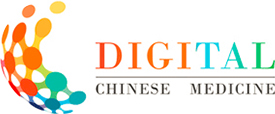Abstract:
ObjectiveTo observe the effects of total flavonoids of chrysanthemum and medicated serum on the expression of related proteins in the lacrimal tissue and dry-eye cell models of male rabbits with dry eye caused by castration.
Methods(1) 150 male Japanese rabbits were randomly divided into five groups, with 30 rabbits in each group: normal control group (group A), sham group (group B), model group (group C), androgen control group (group D) and total flavonoids of chrysanthemum treatment group (group E). The androgen deficiency dry-eye model was established by bilateral castration in groups C, D and E. Normal saline was administered to groups A, B and C by gavage; androgen (testosterone propionate) was injected into muscle in group D; and group E was given total flavonoids of chrysanthemum by gavage. All white rabbits were tested the Schirmer I test (SIT) and tear break-up time (BUT). After euthanasia, tear gland tissue was harvested so that we could observe pathological changes in the expression of related inflammatory factors in the lacrimal gland tissue. The expression of interleukin-1β (IL-1β), tumor necrosis factor-α (TNF-α) and transforming growth factor-β1 (TGF-β1) was detected in the lacrimal gland tissue by immunohistochemistry. Reverse transcription PCR was used to quantitatively detect expression of TGF-β1 mRNA. (2) Male Wistar rat lacrimal epithelial cells were used to establish a model of eye stem cell apoptosis caused by androgen levels. The blank control group was set up without androgen culture, the control group with androgen culture, and the total flavonoids of chrysanthemum group without androgen. The MTT method was used to determine the optimal intervention dosage of drug-containing plasma. Western blot and QPCR were used to detect the expression of AR mRNA, NF-κB phosphorylated protein and TGF-β1 in lacrimal epithelial cells, and the androgen-like effect of total flavonoids of chrysanthemum was observed.
Results(1) Immunohistochemistry showed that groups A, B, D and E had significantly lower expression of IL-1β and TNF-α than group C (P < 0.05); among these, group E had slightly higher expression than group D (P > 0.05). RT-PCR results showed that the relative expression of TGF-β1 mRNA in groups A, B, D and E was significantly higher than in group C (P < 0.05), and the relative expression of TGF-β1 mRNA in groups D and E was higher than that in groups A and B (P < 0.05). (2) Using the MTT method, the final concentration of interfering cells was calculated to be 13.2%. The expression of AR protein, NF-κB and TGF-β1 in the chrysanthemum flavonoid plasma intervention and testosterone propionate intervention groups was enhanced, and there were significant differences relative to the blank group (P < 0.01). The expression level of NF-κB in the total flavonoid containing plasma intervention group was lower than that in the testosterone propionate intervention group (P < 0.01).
ConclusionsThe total flavonoids of chrysanthemum can inhibit IL-1β and TNF-α expression in the lacrimal gland tissue of castrated male rabbits with dry eye to increase synthesis of TGF-β1 mRNA and TGF-β1, thereby inhibiting the inflammatory response. The medicated plasma with total flavonoids of chrysanthemum promotes expression of AR mRNA, upregulating expression of NF-κB, further promoting upregulation of TGF-β1 protein expression in lacrimal epithelial cells, inhibiting inflammation by regulating related proteins, and ultimately alleviating the symptoms of dry eye.









 下载:
下载: